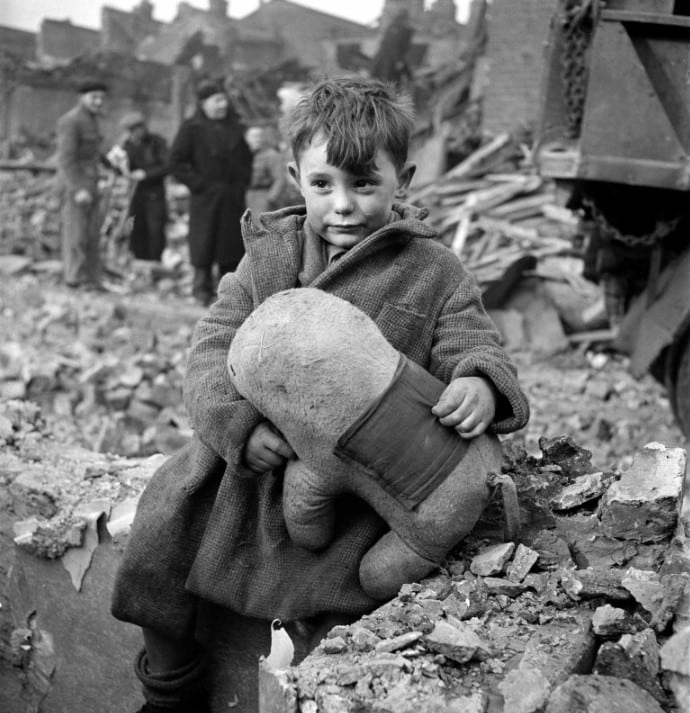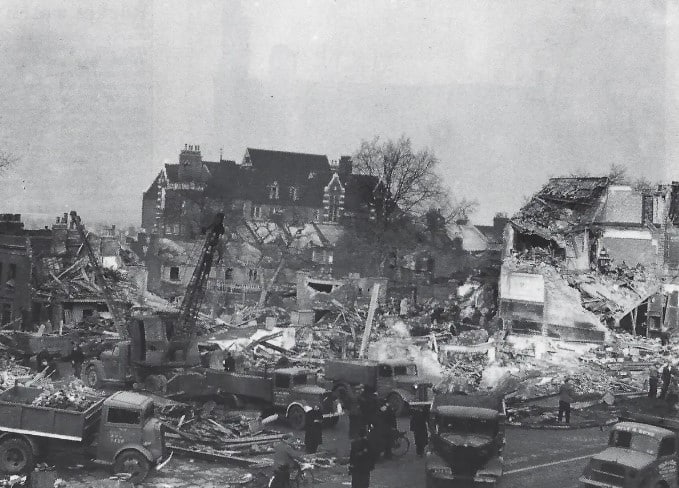The Photo Of An Abandoned Boy With A Stuffed Animal Amid The 1945 London Bombing Ruins Deeply Touched Millions
War leaves deep scars on both the land and the people. It tears apart families, destroys homes, and shatters dreams. The emotional toll is immense, with countless lives marked by loss and trauma.
As the saying goes, “In war, there are no winners, only survivors.” The aftermath of conflict lingers, reminding us of the heavy price of violence and the urgent need for peace.
One of the most striking photos showing the impact of war is the image of an abandoned boy holding a stuffed animal amid the ruins after the German bombing of London in 1945. The boy wasn’t crying out loud, but he moved millions to tears.
The little boy’s heartbreaking situation

The photo was taken by Toni Frissell, a renowned fashion photographer who worked with Cecil Beaton and Edward Steichen. During World War II, Frissell volunteered for the American Red Cross and became the official photographer for the Women’s Army Corps. She traveled to the European front twice and documented the war in London.
The boy in the photograph survived the war and became a truck driver later. Captured amidst the rubble of his demolished home, where his family tragically perished, the image tells a poignant story.
Photographer Toni Frissell recounted the heart-wrenching moment, “I was told he had come back from playing and found his house a shambles—his mother, father, and brother dead under the rubble…he was looking up at the sky, his face an expression of both confusion and defiance.”
She continued, “The defiance made him look like a young Winston Churchill. IBM used this photograph to publicize a show in London. The boy grew up to become a truck driver after the war, and walking past the IBM offices, he recognized his picture”.
The wartime conditions back then

In 1939, Britain and its allies entered into war with Germany and the Axis powers. Initially, Germany saw significant success in defeating its enemies.
The Blitz, which occurred from 1940 to 1941, saw German bombers targeting British cities, resulting in extensive damage and loss of life. Around 43,000 people lost their lives, and two million were left homeless due to the bombings.
However, as 1943 approached, the tide of war began to shift, with Germany finding itself on the defensive.
During this time, intelligence started to surface regarding a new threat to Britain’s cities – missiles and rockets.
Nazi Germany continued bombing London until 1945, employing various delivery methods such as V-1 and V-2 rockets.
The V1 missile flew without a pilot, eventually crashing and exploding once it ran out of fuel. On the other hand, the V2 rocket was a long-distance weapon capable of reaching the speed of sound.
These rockets earned the moniker “revenge weapons,” deployed by Germany to instill fear in British civilians and weaken morale.
A total of 1,115 V-2 rockets were launched at the United Kingdom, with the majority targeting London. However, approximately 40 missed their mark and aimed for Norwich instead.
The V-2 attacks in London during World War II resulted in a devastating toll on civilians. Around 2,754 people were killed, with another 6,523 injured by the powerful rockets.
Surprisingly, these numbers could have been even higher, considering that many rockets missed their targets and exploded harmlessly.

Even though accuracy improved with the Leitstrahl radio guide beam system during the war, missile strikes that hit their targets still caused a lot of casualties.
For instance, one explosion at a Woolworth’s department store in New Cross, south-east London, on November 25, 1944, resulted in 160 deaths and 108 serious injuries.
The V-2, being supersonic and rarely seen or heard as it approached its target, didn’t have the same psychological impact as the V-1. Despite the fear it instilled, the casualties caused by both weapons were not as high as expected.
However, the damage to property was significant, with 20,000 houses being damaged every day during the peak of the campaign.

